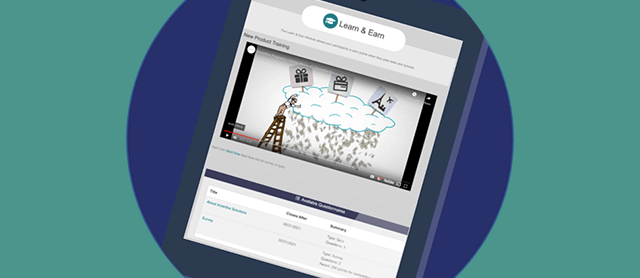Does the marketplace feel a little bit crowded, or is it just me? Every morning when I log in to my work email, I’m confronted with stacks of marketing emails. Some of them I open. Most of them I delete. But I’ve noticed a trend: I tend to open marketing emails based off of senders, instead of subject lines. What do brands who make the cut do differently?
Successful brands consistently offer a clear customer value proposition. Even if I’m not in the market for their solutions today, I know that I will receive value from interacting with their content. And when I am ready to make a purchasing decision, which brands do you think will be top-of-mind?
9 Steps for Communicating an Amazing Customer Value Proposition
The good news is that you’re not doomed to always be an afterthought with your customers. By following these 9 steps, you’ll be presenting customers with a clear value proposition that keeps them coming back for more!
But, before we get down to the list, a quick disclaimer: There’s no getting around product quality and quality of service! If your company doesn’t truly care about delivering a phenomenal experience to your customers, then all the loyalty marketing gimmicks in the world will only be a short-term fix to a major problem.
But we’re assuming that’s not you. You care about providing phenomenal customer experiences and enabling your customers to buy from you. After all, you’re taking the time to read this guide!
1. Identify what your company does well…and showcase it!
Have you taken the time to sit down and write out a list of reasons why customers should choose your brand? Before you can communicate a compelling value proposition to customers, you have to be clear on what you have to offer. Maybe your company provides unmatched product quality. Maybe you focus on delivering hands-on, boutique-style customer support. Maybe your company is innovative and ahead of the trends. Whatever, your strengths are, focus on them. And constantly find new ways to highlight your strong-points to customers. (Hint: If you’re having trouble narrowing the list what your brand does exceptionally well, try sending out a survey to existing customers to see what they love about your brand).

2. Let your branding be your guide.
Customers, for the most part, aren’t loyal to features or price. They are loyal to brands. Focusing on features or price makes you a commodity supplier. Customers won’t think twice about replacing you when competitors come out with comparable features at a cheaper price. You have to focus on always nurturing your brand. Begin by using your themes throughout your loyalty marketing, incorporating your colors, fonts, and logos. But a brand is more than color or typography. A brand is a personality, it’s a story. As you plan your loyalty marketing, make sure customers can practically feel what it’s like to do business with you, and that they feel like they are a valued part of your story.
3. Find ways to create an emotional impact.
Speaking of feelings, make sure you are engaging customer emotionally. Even in B2B sales, where purchase decisions impact bottom lines, buyers tend to make emotional decisions first, using logic to rationalize their decision after the fact. (In fact, a joint study by Google and the CEB Marketing Leadership Council found that B2B buyers are more emotionally invested in their suppliers and service providers than B2C customers). Once you dial in on your brand’s personality, dial it up! Try to make emotional impacts on your buyers and prospects. (Hint: Non-cash customer rewards are a quick way to positively impact consumers on an emotional level).
4. Communicate consistently with customers…on their terms.
Even if you’re being left on unread right now, it’s important to provide customers with consistent communication. Try experimenting with different mediums – email, direct mail, SMS, and push notifications. For existing customers, give them the option to set communication preferences. (Hint: Try featuring your customer rewards in your loyalty marketing emails. Based on our internal case studies, click-through rates for reward-related emails outperform standard marketing email benchmarks by anywhere from 6.8% to 780%).

5. Use data to provide relevant offers at the different stages of the buyer’s journey.
In order to provide relevant, timely communication to customers, you need to be collecting, tracking, and acting on the right data. It’s important to match your customer value proposition with where customers are in their buyer’s journey. For instance, with new customers and prospects, your focus should be on engaging them and building. With active customers, your focus should be on seeing what types promotions they’re engaging with and identify opportunities to upsell and cross-sell relevant products. (Hint: Your customer loyalty platform can be a valuable tool to begin collecting and tracking this data. If you are missing key data points, try incentivizing your customers to provide them).
6. Create connected experiences.
Providing a seamless user experience is an important component of today’s customer value proposition. The ideal is to provide an entire ecosystem for customers to connect and engage with your brand. This includes:
- Integrating platforms and providing single sign-on between your customer loyalty program, your e-commerce platform, and your customer portals.
- Giving your customers a mobile app, so that they can interact with your brand on-the-go.
- Incorporating elements of gamification to keep customers coming back for more.
(Hint: That may sound like a tall order, but did you know that modern loyalty program software can give you ALL of those features?).
7. Educate customers to enable them to buy your products.
Effectively communicating your customer value proposition requires educating customers on your brand, your values, and your products. You need to help customers make the decision to buy from you. This is especially true for B2B customer loyalty marketing. The challenge is: How can you make receiving this education fun and engaging for customers? In addition to producing high-quality content and sharing insights on social media, rewarding customers for performance on interactive quizzes and trivia is a powerful way to help customers learn more about your brand.

8. Personalize your customer rewards.
Rewarding your customers for their loyalty is an important part of building customer relationships. However, in order for rewards to be effective, your customer rewards need to feel meaningful and personalized. A loyalty rewards program can be a meaningful part of your customer value proposition that differentiates you from the competition. But your customer rewards have to feel personalized in order to make the necessary emotional impact. Offering your customers a vast selection of rewards that scale upwards based on level of performance, lets you offer attainable incentives for your entire customer base. (Hint: For many building materials manufacturers, branded promo items and apparel is becoming increasingly popular).
9. Seek customer feedback…and act on it!
How you treat your relationships with customers is a major part of an effective customer value proposition. Communication is a two-way street, and making sure customers feel like their opinions matter shapes how they view your brand. Providing surveys to your customer base will let you know what you’re doing well, where you’re coming up short, and will give you insights to improve your customer value proposition in the future. Most importantly, it will make customers feel like they’re a part of your story!
Interested in Starting Your Own Customer Loyalty Program?
If you need help creating and communicating your customer value proposition, a customer loyalty program might be just the ticket! Contact us for a free planning session where one of our building development specialists will research your company, analyze your situation, and sit down with you to discuss a plan of action.



